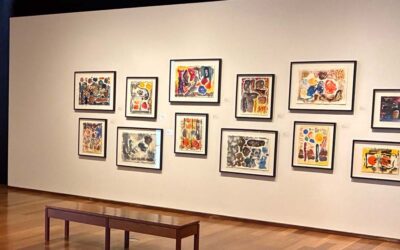Museum Digital Projects: Capacity & Expectation Setting

Rachael Cristine Woody
As a follow up to the “Ask Me Anything: Museum Digital Projects” webinar, this series of posts will review the questions we received in order to provide additional insight, strategies, and resources.
We received several excellent questions after the submission deadline, and they are included/answered in this series. Our thanks to everyone who sent in questions! Your participation helps us develop future content that is of the most use to you, our colleagues.
Today’s Post
Today’s post will focus on questions related to project team capacity and expectation setting for the team and stakeholders.
Q. I don’t have the time to digitize, catalog, etc., myself. Is it OK to have an intern or volunteer do it?
Yes. With good training, instructions, and supervision there are several aspects of digital project work that can be performed by non-staff. Examples of two areas where it’s typically easiest to apply a non-staff person are:
- Digitization
- Basic data capture and creation (in a Word.doc, spreadsheet, or CMS)
For more information, strategies, and examples for how to work with non-staff persons in a museum setting, please read my post How to Ethically Build Museum Intern and Volunteer Opportunities and check out my Digital Projects webinar Strategies for Working with Staff, Volunteers, and Interns. And, if you’d like more ideas for how to creatively engage non-staff in museum projects, please see my webinar Volunteer Activity Ideas for Libraries, Archives, and Museums webinar.
Q. The Board, researchers, visitors, etc., keep asking us why out entire collection isn’t online. How can we politely tell them how much work and money it takes?
Unfortunately, this reflects a common misunderstanding by people who care about the museum collection, but aren’t aware of the incredible amount of resources it can take to do anything with that collection. When this happens, I recommend doing these three things:
- Start by acknowledging the common assumption—that it’s easy to snap a photo and post it on a social media platform like Instagram.
- Next, briefly outlining how performing the same action for a museum collection differs as there’s research, high-quality image capture, and data entry that needs to happen and according to professional standards.
- Finally, have a few example projects and numbers at hand to demonstrate your point. For example, X project required the imaging and cataloging of 500 objects. It took us X hours to complete this project which totals to $X cost.
Q. Our small team is already overworked. Do you have strategies for how to make the best use of staff time?
- Have a workflow in place to help staff keep pace and focus.
- Perform repeat tasks in batches in order to decrease transition time.
- When there’s downtime or wait time, have an alternate activity at hand that can be worked on intermittently. For example: While waiting for an image to render you can begin basic data capture.
For more information on how to creatively leverage staff capacity with an ethically-centered approach, please see my post How to Ethically Adapt Museum Staff Capacity for Digital Projects available via Lucidea’s Think Clearly Blog. Finally, read and consider what it takes for building longevity into a project with our next Q&A immediately below.
Q. How can I plan for the longevity of the project?
This is such a critical area to any museum digital program because of the simple truth that our work—naturally—will never be done. It can be easy to get burnt out or overwhelmed and that’s the opposite of how we want our team to feel when undertaking digital projects. When something is sustainable it means that we’re able to maintain the same level of effort or action for a long period of time. For museum digital projects, we want our team to be able to adhere to standards while making a continuous (and technically complex) output. So how can we make museum digital projects sustainable? By incorporating the following elements:
- A clearly defined scope of work with specific deliverables identified. If the project is more than a yearlong then consider defining phases of work so that the ability to “complete something” is not far off.
- Solid instructions with clear standards.
- A workflow that can support efficiency of actions with the use of batch work and/or assembly line production.
- A routine and set time for the team to focus on the digital project for more than an hour at a time.
- A routine and set time for the team to take breaks from their digital project work and engage their brain and bodies in a different way. Breaks from repetitive work is incredibly important both for human well-being as well as supports better quality outputs.
For more reading on this subject please see the following posts via Lucidea’s Think Clearly Blog: How to Build Sustainability into Museum Digital Projects, 3 Strategies for Museum Digital Project Sustainability, and Museum Digital Project Sustainability Hacks.
Conclusion
The majority of museums struggle with being able to financially afford staffing levels required to adequately provide care and management of collections while also meeting their mission. With this in mind, it’s no wonder that many museums struggle with capacity issues. The small but mighty museum staff are often balancing the responsibilities and tasks of more than one job, so expectation setting and creative ways to increase capacity are critical tools for any digital project manager to employ.

Rachael Cristine Woody
Rachael Woody advises on museum strategies, digital museums, collections management, and grant writing for a wide variety of clients. She has authored several titles published by Lucidea Press, including Museum Digital Projects and You. Where to Begin? Rachael is a regular contributor to the Think Clearly blog and a popular presenter.
Never miss another post. Subscribe today!
Similar Posts
From Preservation to Resilience: An Introduction to Building Resilient Digital Collections
Preserving a digital collection is a job that is never done. But what if we shifted our focus from preservation to building digital resilience?
Client Spotlight: MacLaren Art Centre Goes Beyond Collections Care to Access and Growth
“As our needs evolved, it became clear that our existing CMS was no longer working for us. Not only do we need to perform basic collections care, we need a system that will support public access, enable growth, and match our innovative strategies.”
Museum Collections Online: Digital Storytelling Blog Series Roundup
An overview of 10 blog post series that highlight how museums can leverage online collections and digital storytelling platforms, strategies, tools, and best practices.
How Museums Can Broaden Access and Improve Accessibility with Digital Storytelling
Museum expert Rachael Cristine Woody explains how digital storytelling expands access and improves accessibility of museum collections with inclusive multimedia formats.




Leave a Comment
Comments are reviewed and must adhere to our comments policy.
0 Comments